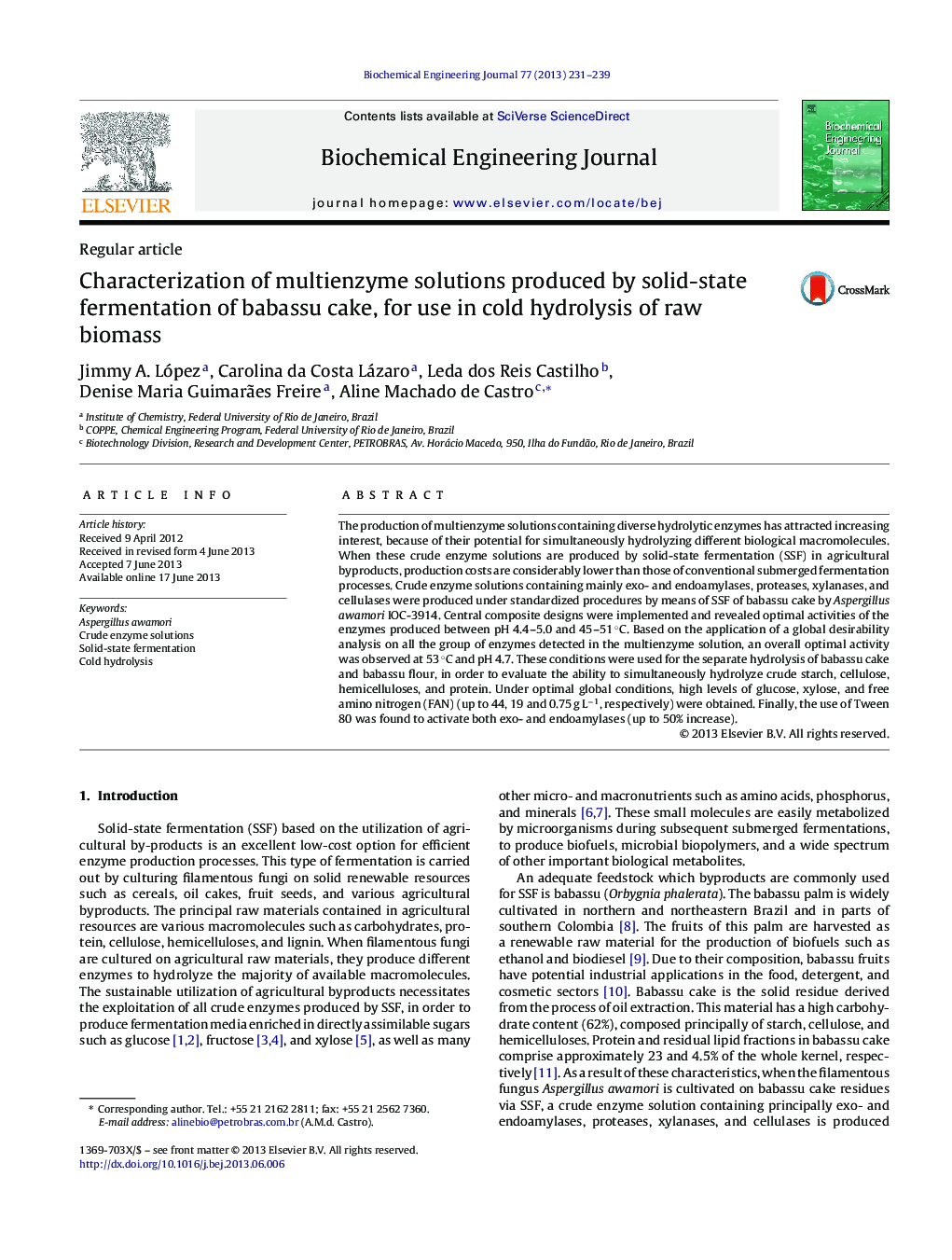| Article ID | Journal | Published Year | Pages | File Type |
|---|---|---|---|---|
| 6484124 | Biochemical Engineering Journal | 2013 | 9 Pages |
Abstract
The production of multienzyme solutions containing diverse hydrolytic enzymes has attracted increasing interest, because of their potential for simultaneously hydrolyzing different biological macromolecules. When these crude enzyme solutions are produced by solid-state fermentation (SSF) in agricultural byproducts, production costs are considerably lower than those of conventional submerged fermentation processes. Crude enzyme solutions containing mainly exo- and endoamylases, proteases, xylanases, and cellulases were produced under standardized procedures by means of SSF of babassu cake by Aspergillus awamori IOC-3914. Central composite designs were implemented and revealed optimal activities of the enzymes produced between pH 4.4-5.0 and 45-51 °C. Based on the application of a global desirability analysis on all the group of enzymes detected in the multienzyme solution, an overall optimal activity was observed at 53 °C and pH 4.7. These conditions were used for the separate hydrolysis of babassu cake and babassu flour, in order to evaluate the ability to simultaneously hydrolyze crude starch, cellulose, hemicelluloses, and protein. Under optimal global conditions, high levels of glucose, xylose, and free amino nitrogen (FAN) (up to 44, 19 and 0.75 g Lâ1, respectively) were obtained. Finally, the use of Tween 80 was found to activate both exo- and endoamylases (up to 50% increase).
Related Topics
Physical Sciences and Engineering
Chemical Engineering
Bioengineering
Authors
Jimmy A. López, Carolina da Costa Lázaro, Leda dos Reis Castilho, Denise Maria Guimarães Freire, Aline Machado de Castro,
